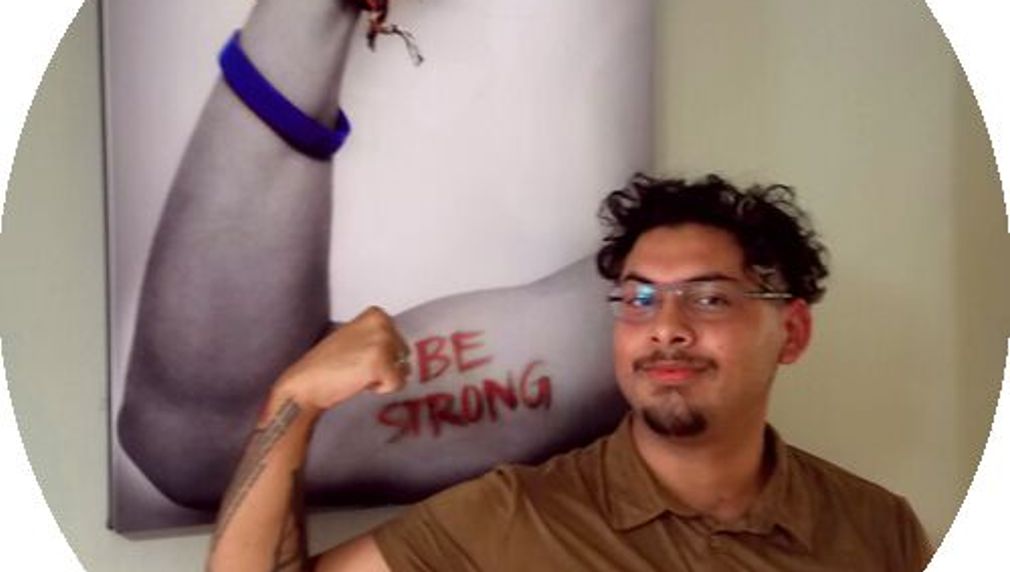Staying Strong
YES’s Staying Strong program ensures that the youth in our charge maintain the positive attitudes, behaviors, and connections that they develop while living in one of our homelike shelters. Our approach goes beyond providing an entry point for homeless individuals. Our five-year commitment at the time of intake ensures that the youth we serve can still turn to us after they have made the transition from YES housing. Staying Strong extends our work into the community so that future challenges do not become long-term crises.

In which areas of Los Angeles will you be directly working?
County of Los Angeles
What is the problem that you are seeking to address?
Now estimated at 65,000, LA’s homeless population is projected to grow, particularly due to the acute challenges of the pandemic. This crisis impacts not only the unhoused individuals who wrestle with survival on a daily basis, but our entire community. For youth, whose ranks among the unhoused rose by 19% between 2019 and 2020, the problem of homelessness is one they could face for years to come. The system offers few solutions for youth, and as with the adult system, where points of entry are not matched adequately with thoughtful exit strategies, the LA continuum of care fails to meet the challenges faced by youth whose homelessness too often reflects an acute lack of permanent connections. Agencies addressing the youth homelessness problem must focus on those connections by recognizing that positive youth development includes the establishment of strong and supportive relationships.
Describe the project, program, or initiative that this grant will support to address the problem identified.
YES’s Staying Strong program was designed to end the cycle of homelessness for the individual youth we serve. When a youth enters one of our supportive shelters, they arrive with histories of trauma and few, if any, positive connections. We immediately address their needs in key areas—mental health, education, employment/income, life skills—and as our case management staff works with the youth, a trust is established that allows the youth to reframe their pasts and re-imagine their futures. They envision themselves as college material for the first time in their lives. Or they learn to believe that their most passionate interests can be parlayed into a living-wage job. They also begin to interact with others in the community who can help them realize their goals for adult self-sufficiency. These positive connections—with YES staff and with individuals/agencies in the community—are essential to sustaining the healthy trajectories that are begun while in shelter, and YES’s Staying Strong program guarantees those connections will be cultivated. Our commitment to each youth is for 5 years—most often, 1-2 years in shelter and 2-3 years in the community—and because of that commitment, we are able to work with youth as they confront the challenges that young adults often face. By sticking with them through these early years of their independence, we prevent challenges from becoming crises. We prevent the youth we serve today from becoming the adult homeless of tomorrow.
In what stage of innovation is this project, program, or initiative?
Expand existing project, program, or initiative
Approximately how many people will be impacted by this project, program, or initiative?
Direct Impact: 100
Indirect Impact: 400
Describe how Los Angeles County will be different if your work is successful.
Every homeless youth who does not later experience adult homelessness represents a better future for LA County, and YES’s intended impact is to reduce homeless recidivism, one youth at a time. Our programming approach is individualized, and the impact of our work is witnessed in individual growth and ultimate self-sufficiency. For the youth who benefit from our 5-year commitment and the Staying Strong program that sets us apart from other agencies’ work, the short-term impact will be a positive sense of the future as they work with their case management team to address mental health issues, identify and realize educational and employment goals, and learn and practice the types of life skills that result in everyday independence and self-sufficiency. In the long term, those immediate impacts will lead to fulfilling lives free of crisis and supported by individuals and resources that support realistic goals.
What evidence do you have that this project, program, or initiative is or will be successful, and how will you define and measure success?
We measure impact through youth-directed Individualized Service Plans that are introduced at intake and then guide programming through the articulation and revisiting of weekly SMART goals in five key areas: education, employment/income, life skills, mental health, and permanency. We’ve witnessed success as youth obtain their high school diploma or GED and then go on to a 2- or 4-year institution, often the first in their family to do so. We’ve witnessed success as youth complete paid internships, in the process honing employable skills they didn’t know they had. We’ve seen youth save thousands of dollars to create the nest-egg that will help them through unknown future challenges. We’ve watched as youth redefine relationships with family members who were previously unable to provide emotional support. But these developments must be fortified through ongoing, substantive support, and Staying Strong’s long-term structure is essential to realizing lasting impacts.
Which of the LIVE metrics will you impact?
Resilient communities
Access to mental health services
Homelessness
Indicate any additional LA2050 goals your project will impact.
LA is the healthiest place to CONNECT